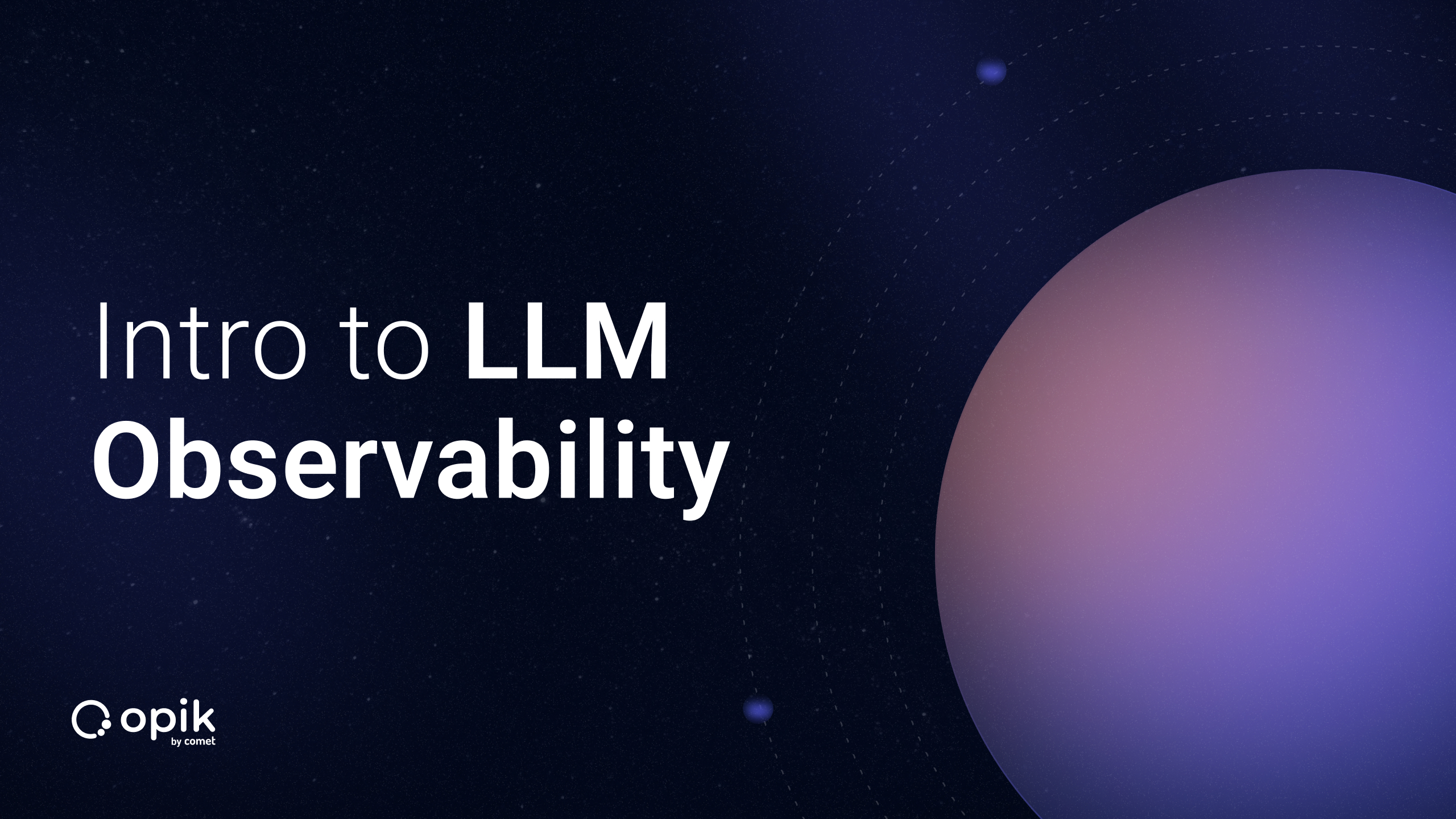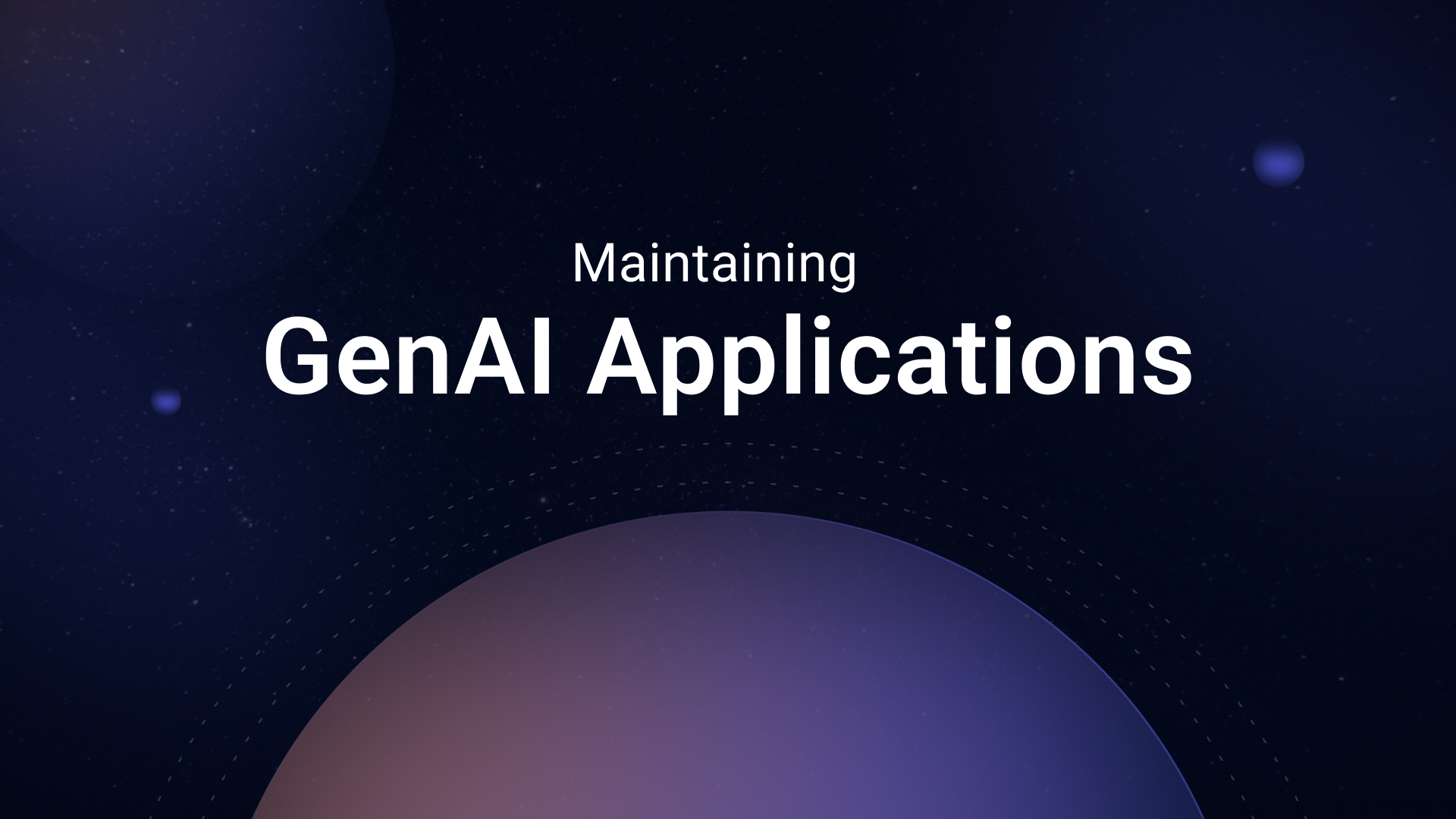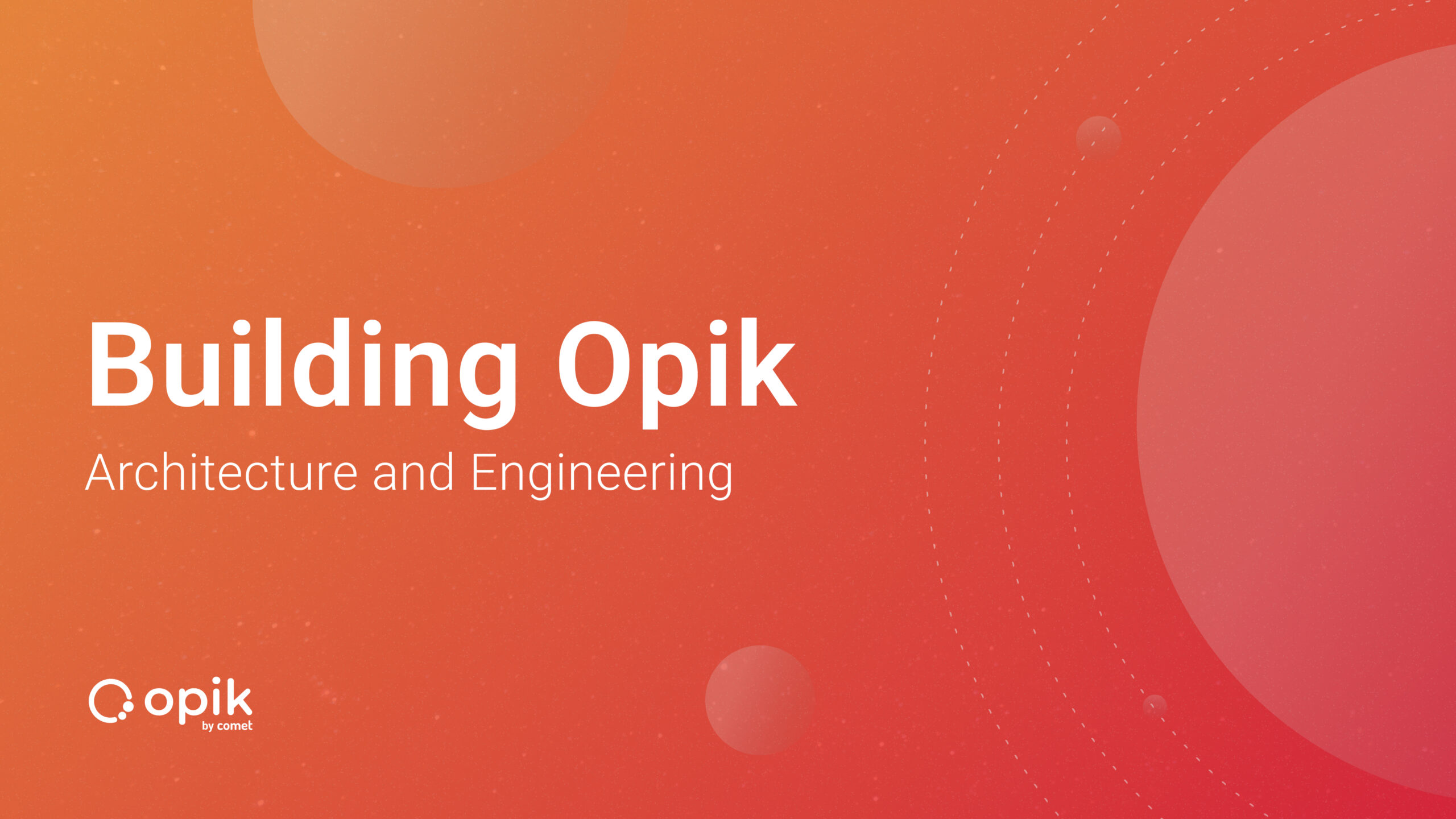Intro to LLM Observability: What to Monitor & How to Get Started

While LLM usage is soaring, productionizing an LLM-powered application or software product presents new and different challenges compared to traditional ML applications. This is because LLMs are not just deep learning models, they are a combination of other components such as vector databases, orchestration frameworks, caching layers, etc. LLMs have large model sizes, complex architecture, black-box behavior, and a non-deterministic and resource-hungry nature, which makes them difficult to integrate with traditional software applications. All these challenges make troubleshooting issues in LLM applications difficult. This is where LLM observability comes into play and addresses all these challenges by providing insights into the LLM application flow and performance.
At a high level, LLM observability is the ability to monitor, analyze, and understand the behavior of an LLM system in real time to ensure it functions as expected. It helps teams to understand the LLM output, manage risks, detect drifts or biases, resolve issues, and therefore improve model performance. In this article, we will discuss LLM observability and its importance for real-world LLM applications.
Why is Observability Important for LLMs?
While LLMs are at the forefront of AI, their complex architecture and behavior can introduce challenges that require robust observability mechanisms. Also, deployment of LLMs is not an easy task, as most LLM apps need to rely on complex, repeated, chained, or agentic calls to a foundation model. So, if an issue arises in your LLM-based application, it can be quite difficult to trace it down if you do not have any observability solution in place. With proper monitoring, you can keep track of some of the most common LLM-related issues such as:
- Hallucinations: Even though LLMs are trained on huge amounts of data, they cannot answer all the questions users ask. In scenarios where a model can’t answer a question, it sometimes generates a plausible-sounding but factually incorrect or nonsensical response. This phenomenon is called hallucination. Hallucinations can potentially lead to the spread of misinformation and can result in user mistrust in critical LLM applications.
- Security and Data Privacy: Many LLM-based applications process sensitive and private data, which exposes them to security challenges like potential data leaks, unauthorized access, mishandled compliance information, and output biases due to skewed training data. Observability helps in monitoring and preventing such security issues.
- Prompt Hacking: Prompt hacking or prompt injection is a technique where malicious users prepare a prompt that manipulates the LLM applications to produce specific content. Prompt hacking often bypasses security controls and results in generating unintended and harmful responses. Some carefully crafted prompts can also compel LLMs to generate sensitive information which is often not intended for end users and can harm organizations.
- Model Prompt and Response Variance: LLM applications, especially chatbots, are often used by a wide variety of people with different intents. Based on context, LLMs can generate responses that vary in length, language, and accuracy, even if the same question is asked by multiple users. This unpredictability in the LLMs response can lead to confusion and inconsistent user experience.
Benefits of LLM Observability
Language models are often criticized for their black-box nature, as users cannot understand the reasoning behind their generated responses. LLM observability helps infer insights into the inner workings of the LLMs such as datasets influencing outputs, request-response pairs, word embeddings, or prompt chain sequences. These insights enable developers to understand as well as explain the model behavior. This increased transparency also helps developers trace errors back to their root causes and find solutions quickly for them.
As LLMs often handle complex tasks like content generation, customer support, etc., where speed and accuracy are critical, observability becomes the need to keep your application healthy and running. LLM observability helps developers keep track of key performance metrics like response time, throughput, and output quality. This continuous tracking of important metrics helps in targeted optimizations, such as fine-tuning model parameters, improving infrastructure, or addressing issues in the input pipelines. Also, by using observability organizations can analyze the usage patterns of various computing resources. This helps them identify the underutilized instances or times of low activity to scale the infrastructure as needed.
LLM observability helps in tracking the strange behaviors in the application for example unexpected spikes in query volumes or signs of adversarial attacks. Once detected, they can alert the concerned teams to take the steps for risk mitigation. Finally, with observability, you get real-time insights into the LLM application’s behavior, which helps quickly identify the root cause of problems for faster resolutions.
Core Components of LLM Observability
Monitoring Performance Metrics
Monitoring performance metrics is the key foundation of LLM observability. Metrics such as latency, throughput, resource utilization (CPU/GPU), and error rates provide real-time insights into the health of the system. Measuring these metrics helps teams evaluate how well LLM models are performing in a production environment. For example, tracking throughput makes sure that the model can handle the expected workload without degradation.
User Interaction Tracking
User interaction tracking involves keeping track of data on queries, response time, feedback, and engagement patterns. This tracking provides an understanding of how users are interacting with the LLM application. For example, if a certain prompt does not yield the desired response, the team can understand the issue and work on refining the model’s training or adjusting the model’s configuration to better align with user requirements.
Tracing Requests
In the context of LLMs, tracing refers to the lifecycle of single-user interaction that starts with the initial user input and ends with the final application response. This process provides a detailed view of how the LLM processes data, including the sequence of operations, intermediate computations, and external API calls. It is helpful in debugging issues such as slow responses, incorrect outputs, or system errors.
Output Quality Measurement
The ultimate goal of any LLM-based application is to deliver high-quality outputs that meet user expectations. To evaluate this output quality you might need to keep track of certain evaluation metrics that can assess the relevance, accuracy, coherence, and ethical compliance of model responses. Automated and LLM-based metrics like BLEU, ROUGE, Perplexity, BERTScore, RAGAs, LLM-as-a-judge, etc. can help developers quantify the LLM’s output performance.
Techniques for Effective LLM Observability
Implementing effective LLM observability requires specialized techniques and tools that can monitor, diagnose, and optimize the performance of LLMs. Some of the core techniques for effective LLM observability include:
Automated Logging and Monitoring Tools
Automated logging and monitoring are crucial for tracking the LLM activities and system performance in real-time. Popular tools like Opik, from Comet, specialize in logging and visualizing the LLM interactions. These tools can provide insights into key metrics such as response quality and resource usage. Along with the logging, these tools also provide custom dashboarding capabilities and alerting mechanisms for efficient monitoring and iteration during development and testing.
Data Collection Pipelines
Effective LLM observability depends on efficient data collection pipelines that can aggregate and store critical data for analysis. These pipelines are designed to capture data from an array of sources including model logs, user interactions, system performance metrics, and feedback mechanisms. A robust pipeline makes sure that all the relevant metrics are readily available for real-time monitoring and historical data analysis which forms a strong foundation for observability.
Root Cause Analysis for Performance Issues
Since there are multiple moving components in an LLM-based application, root cause analysis (RCA) becomes essential to identify performance issues like high latency or inaccurate outputs. RCA starts with identifying anomalous metrics through monitoring tools. Then it traces the affected requests to pinpoint the failure point. Once the failure point is identified, teams can work on implementing various solutions like optimizing the computational graph or reallocating resources to get the optimal performance.
Anomaly Detection
Anomaly detection is the process of identifying the unusual behavior in LLM systems. Machine learning models are normally used for this purpose due to their ability to process huge amounts of data and detect anomalies quickly and accurately as compared to humans. For anomaly detection, you can either use a tool like Grafana’s Machine Learning Anomaly Detection or you can build a custom solution on your own using popular machine learning frameworks like TensorFlow or PyTorch.
Best Practices for Implementing LLM Observability
Now that you know about LLM observability, its key components, and the techniques for effective LLM observability, it is time to check some of the best practices that can help you deliver high-quality and reliable outputs with LLMs.
- Setting Clear Observability Objectives: The first step for implementing observability is to set a clear objective that aligns with your organization’s business goal. For example, if the primary business goal is to enhance customer satisfaction through personalized responses then observability should mainly focus on metrics like response relevance, latency, and user feedback.
- Prioritizing Key Metrics: There are various types of metrics available that can assess the quality of your LLM application and not all of them are equally important. This is the reason that metrics like response time, accuracy, model drift, and error rates should be prioritized as they directly influence how the user interacts with the system.
- Integrating Observability Tools: Creating an observability solution on your own requires a lot of resources and time. Tools like Opik are easy to integrate with existing development and operational pipelines without introducing unnecessary complexity. These tools offer much better observability capabilities than building a custom observability solution on your own.
- Continual Refinement of Observability: Similar to machine learning solution deployment, observability is not a one-time implementation but an ongoing process that evolves with the system and its usage. You must regularly review the observability practices and incorporate feedback from users, developers, and system performance data to improve upon the existing observability capabilities.
Getting Started with LLM Observability
With so many layers of tracking and monitoring required across the components of a complex LLM system, it can be a challenge to build out LLM observability tooling that works well at scale, lets different stakeholders collaborate easily, and includes multiple functions like tracing, annotation, scoring and evaluation, prompt tracking, and production monitoring. Many solutions do one or two of these things well, and many are either open source or highly scalable — but not both.
With Opik, developed by Comet’s team of data scientists, you get the best of both worlds: a truly free and open source LLM observability framework that’s built to handle the most demanding production environments. Try Opik free today and discover how easy it is to create a dataset and log your first trace.


